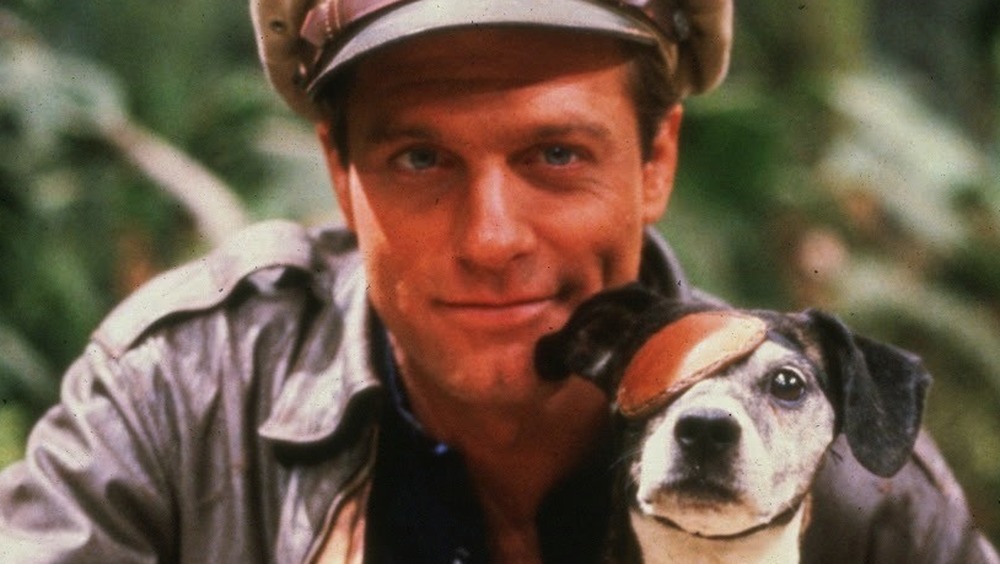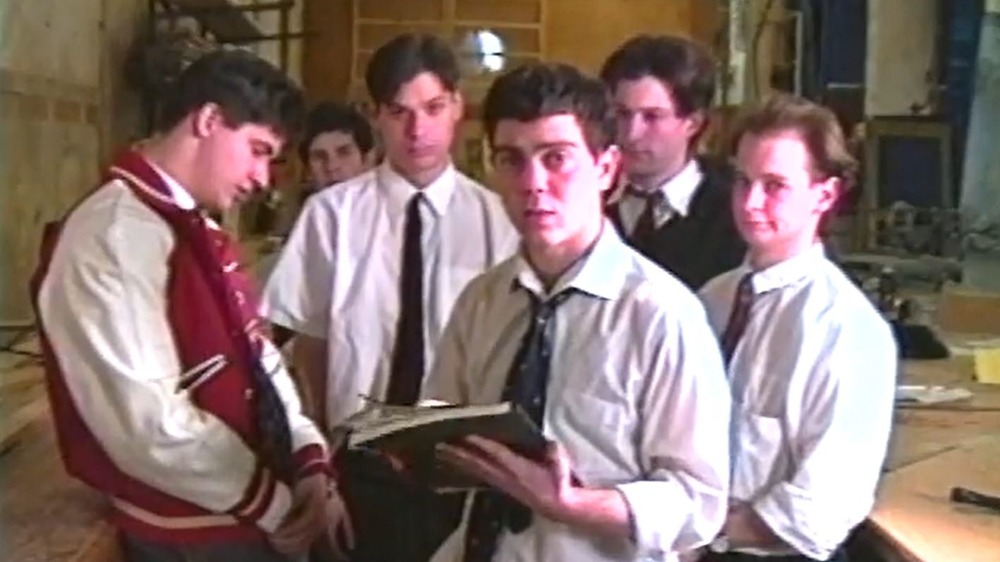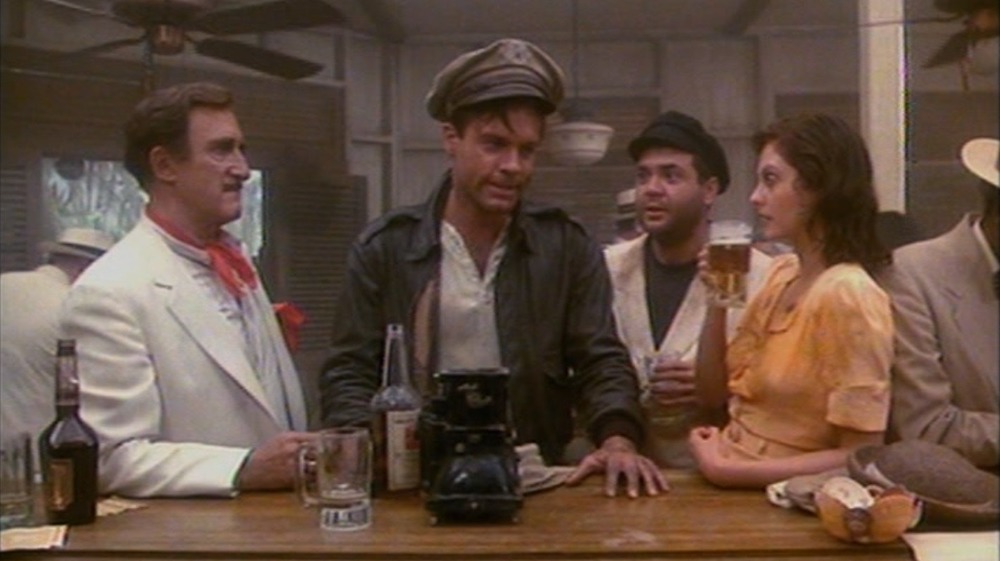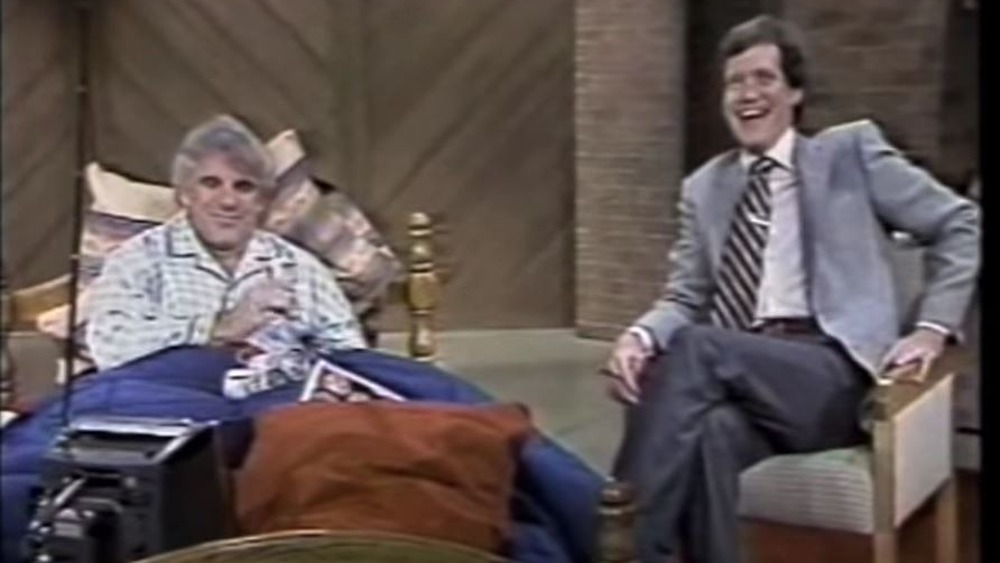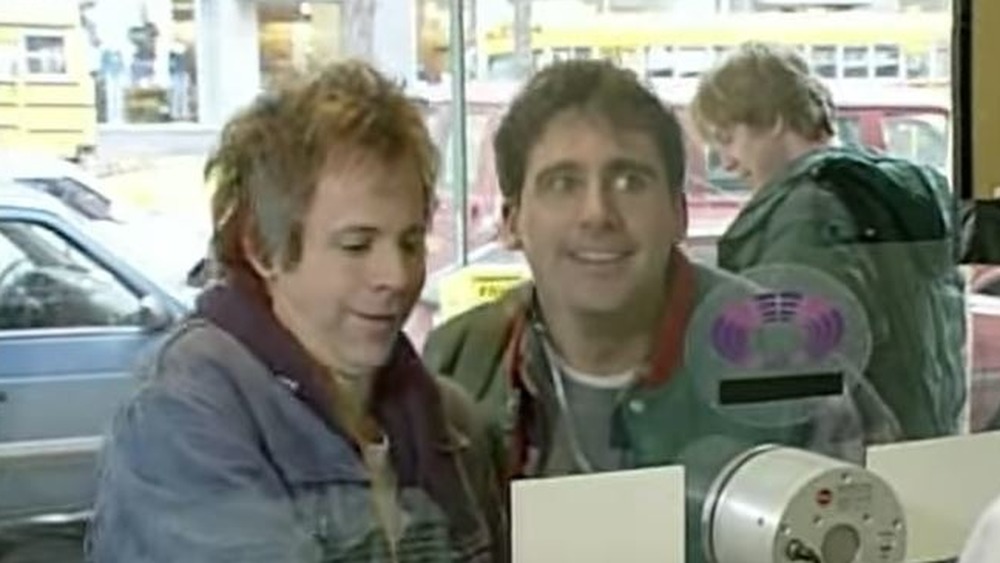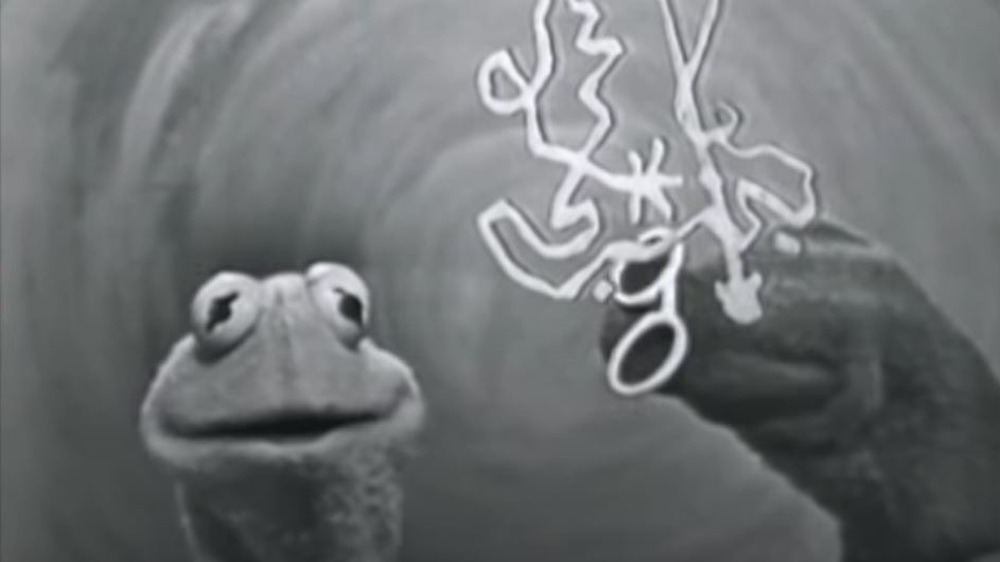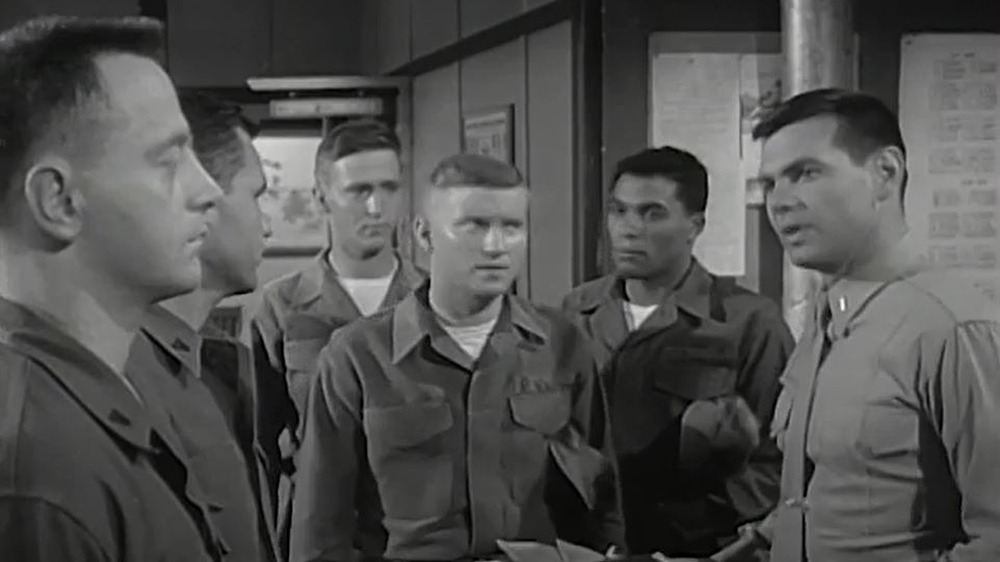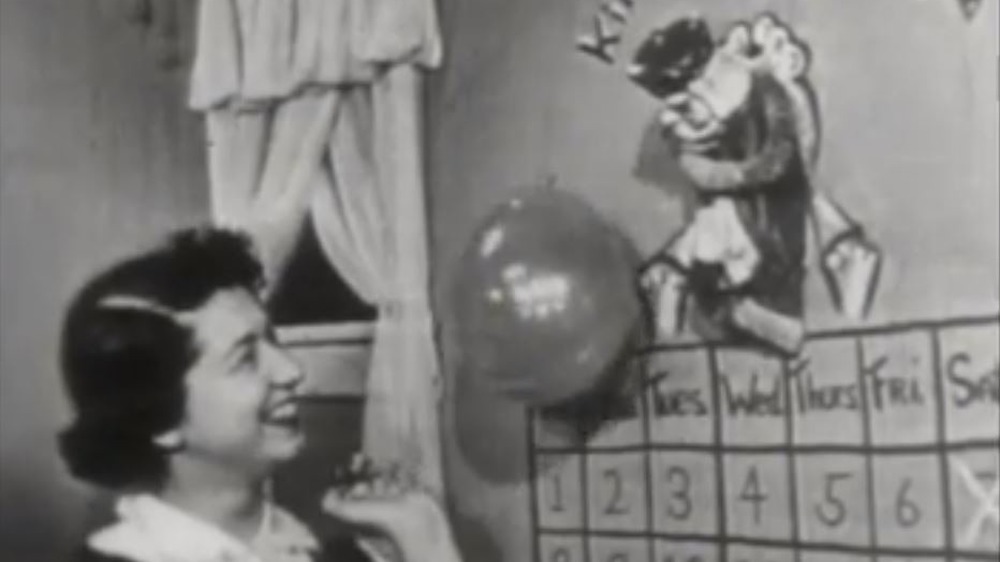The Most Influential TV Shows You've Never Heard Of
It's not hard to come up with lists of influential television shows, by any metric of the word "influential." Steve Allen started late night talk shows in America with Tonight. All in the Family was among the first shows to cover contentious topics like racism and religion. Astro Boy was the first anime series broadcast overseas. It's easy with famous shows.
What's much harder is tracking down shows that were almost as influential but far lesser known. A lot of early television is lost forever, and even some more recent television programs were thrown into storage for years after airing and nearly forgotten. Here, we've done our part to track down some of the most important or influential shows the average viewer hasn't seen or doesn't remember.
Some of these shows were early works of recognized actors and creators. Others were one-and-dones with big historical impacts. Some were just great incubators for talent. Many of them were pretty good to great, and worth seeking out — after you read about them here, of course.
You Wrote It, You Watch It gave us The State and Jon Stewart
You Wrote It, You Watch It was a show on MTV that ran from 1992 to 1993. Often cited as an early version of crowdsourcing, the show featured comedy troupe The State acting out strange stories viewers sent in via mail or interviewed on the street. It only ran for one season due to low ratings, though The State made most of it available to watch on their Vimeo page.
Not long after You Wrote It, You Watch It was canceled, The State were given their own self-titled sketch comedy show on MTV — one that ran for about three years, four seasons, and 28 episodes. The show was early TV work for The State, which had 11 members — most of whom went on to even greater success individually. Michael Ian Black, Thomas Lennon, Kerri Kenney-Silver, Joe Lo Truglio, David Wain, and Michael Showalter have gone on to mainstream success in particular, either as actors or writers.
The segments were introduced by a young Jon Stewart in one of his first big TV gigs. After the show was canceled due to low ratings, he quipped "You wrote it, you just didn't watch it!" The State also maintained a relationship with Stewart, showing up on his MTV talk show.
Tales of the Gold Monkey inspired a Disney cartoon and a season of Archer
The smash success of Raiders of the Lost Ark saw lots of imitators pop up to mooch off its popularity. One of those was a short-lived TV show called Tales of the Gold Monkey, and chances are that you've probably seen something inspired by it.
Tales of the Gold Monkey took place on a South Pacific island pre-World War II. It followed the adventures of Jake Cutter (Stephen Collins), a former military pilot turned operator of an air cargo delivery service. Also on the island were other stock adventure serial characters: an alcoholic best friend, a whip-smart dog, a beautiful spy for the US government who moonlights as a bar singer, and so forth.
The low-rated show was axed after one season, but not before picking up a cult following and some influential fans. Animation writer Jymn Magon told users of the Animation Source forum that "Tales of the Gold Monkey was an inspiration" for the Disney Channel original series TaleSpin.
Additionally, Archer creator Adam Reed recounted to the AV Club in 2012 that "one of my favorite shows ever is Tales of the Gold Monkey...I was nuts about that show." Six years later, Danger Island – Archer's ninth season, where Sterling Archer dreams that he's a cargo plane pilot on a mysterious Pacific island — drew direct inspiration from Tales of the Gold Monkey. One episode even had Pam break the fourth wall and say an idol they're looking for is "not a Gold Monkey."
The David Letterman Show predated Late Night
David Letterman spent the late '70s rising from stand-up star all the way to frequent Tonight Show guest host. NBC spent several years trying to find a project worthy of Letterman's talents, including a failed 1978 pilot for an afternoon talk show called Leave It To Dave. But by 1979, a bigger issue arose: Johnny Carson was threatening to quit The Tonight Show. At the same time, NBC President Fred Silverman was looking to shake up the morning show genre and attract a younger crowd. These two forces combined to produce The David Letterman Show in 1980, which aired weekdays at 10am on NBC. It's an oft-forgotten but important part of Letterman's three decades on air.
Many saw the morning show as a Tonight audition for Letterman. The show wasn't a ratings success, but it was the genesis for much of Letterman's late night career. The head writer was Merrill Markoe, his girlfriend and an acclaimed comedy writer in her own right who would become head writer for Late Night. The show originated many recurring bits that became Letterman staples for years to come, including "Stupid Pet Tricks," "Viewer Mail," and "Small Town News."
After the show was canceled, NBC still thought highly enough of Letterman to give him a holding contract, while Carson eventually got a new contract that gave him control of the hour after The Tonight Show. This slot turned into Late Night with David Letterman, which retained a lot of the same key staff and bits as his morning show.
The Wilton North Report had one of the best writers rooms of all time
The Wilton North Report was part news magazine, part comedy show, and 100% impossible to define — but not in a fun way. The show was a historic bomb, premiering in December 1987 and wrapping in January 1988, yet it somehow had one of the best writers rooms of all time. The show had one established writer — counterculture icon Paul Krassner — but more interesting were four new young writers: Greg Daniels, Conan O'Brien, Nell Scovell, and Danny Zuker.
Daniels and O'Brien both joined the writing staff of Saturday Night Live before going to write many acclaimed episodes for The Simpsons. They left around the same time to go on to further success over the next quarter century: O'Brien pursued his lengthy late night hosting career, while Daniels created or co-created three of the most notable comedies in recent TV history: King of the Hill, the American adaptation of The Office, and Parks and Recreation.
Scovell went on to be story editor for the last season of Newhart and later joined the writing staff of Late Night with David Letterman, the second female writer they ever hired. She's been writing for TV ever since, for shows ranging from Coach to Warehouse 13, and created Sabrina the Teenage Witch.
Danny Zuker joined the Arsenio Hall Show a few years after Wilton North ended, launching a long career in production and writing. He's produced shows including Just Shoot Me! and Grace Under Fire, and was the executive producer of Modern Family during its entire run.
The Dana Carvey Show launched a ton of big comedy names
Fresh off Saturday Night Live, Dana Carvey took his talent to ABC with The Dana Carvey Show. While critically acclaimed, the show sandbagged itself after a controversial first sketch where Carvey as Bill Clinton breastfed animals. It was canceled after seven episodes, but its legacy lives on — specifically through alumni from its writers room, often called the best in TV history.
The immensely talented and now immensely disgraced Louis C.K. was the show's head writer. The rest of the team included Charlie Kaufman, Oscar-winning screenwriter of Eternal Sunshine of the Spotless Mind; Dino Stamatopoulos, creator of shows like Moral Orel and portrayer of Star-Burns on Community; Robert Carlock, showrunner of 30 Rock and co-creator of The Unbreakable Kimmy Schmidt; Spike Feresten, who wrote the "Soup Nazi" episode of Seinfeld; and Jon Glaser, who wrote for Inside Amy Schumer. Robert Smigel used the show as a launchpad for SNL's TV Funhouse – The Ambiguously Gay Duo started on Carvey.
The show also introduced two of the most important comedians of the past 25 years: Steve Carell and Stephen Colbert. The two recalled on The Late Show how their "waiters nauseated by food" sketch got them hired at The Daily Show. But the outstanding cast could have been even better. During an appearance on The Tonight Show, Louis recalled to Jimmy Fallon that a young Fallon auditioned for The Dana Carvey Show. All the women on the show lobbied for Fallon's hiring, while Louie — jealous of Fallon's good looks and talent — torpedoed it.
Sam and Friends was the first appearance of Kermit the Frog
Sam and Friends was a puppet show that ran on WRC-TV in Washington, D.C. and Baltimore from May 1955 to December 1961. It aired every weekday, sometimes twice a day. Few episodes were ever recorded, but clips can be found on YouTube and various archives. The show is important because of the man behind it: Jim Henson. It was his first television show, and the origin of his most iconic creation.
The main character was Sam, a bald papier mache man and one of Henson's first puppets. Henson continued to experiment with different puppets, especially ways of making them more expressive than the Off Brand Punch And Judy ones he was using. Eventually he made a fabric puppet out of his mother's old coat, a lizard of sorts he named Kermit. He, along with similar felt puppets, became the most prominently featured puppets towards the end of the show's run — and became the basis for the massive multi-media franchise known as the Muppets.
The Lieutenant was Gene Roddenberry's first TV series
The Lieutenant was Gene Roddenberry's first crack at producing his own television series, only lasting one season between 1963 and 1964. Like many of Roddenberry's other non-Trek ideas, it wasn't particularly successful or even all that memorable. What matters most is that it was where he met many of the actors who would later appear on Star Trek.
The show followed USMC Second Lieutenant William Tiberius Rice, played by Gary Lockwood, who would go on to portray navigator Gary Mitchell in the second Star Trek pilot (and third aired episode), "Where No Man Has Gone Before." Even so, he was still the least consequential actor of those who would beam aboard the Enterprise.
The series saw the screen debut of Nichelle Nichols in "To Set It Right," an episode about a racial altercation between a corporal (played by Dennis Hopper) and a private. Nichols would go on to play Star Trek's groundbreaking communications officer Uhura and briefly have an affair with Roddenberry. The episode also previewed the socially conscious topics Star Trek would tackle.
Many of the other episodes featured guest spots by future Trek actors, including Leonard Nimoy, Walter Koenig, and Ricardo Montalban. Roddenberry's future wife Majel Barrett — who played Nurse Christine Chapel on Star Trek: The Original Series and Lwaxana Troi on Star Trek: The Next Generation – also had a spot.
The Children's Corner was an early work of Fred Rogers
WQED, America's first community-sponsored television channel, launched in Pittsburgh in 1954. The network focused on educational programming, especially for elementary school kids. One of their earliest programs was The Children's Corner, which ran from 1954 until 1961. The show was hosted by Josie Carey, a multi-talented performer who also produced the show. Her off-camera partner was an up-and-coming performer-producer named Fred Rogers.
Rogers — not quite "Mr. Rogers" yet — honed many of his talents on this show, specifically his focus on children's television. He created many puppets who would become fixtures on Mister Rogers' Neighborhood, including Daniel, King Friday, X the Owl, Henrietta, and Lady Elaine. He helped write songs with Carey, a natural skill of his that came in handy on his own later show. He also studied child development during this time, to make sure his work was as effective and responsible as possible. Rogers, however, was a bit camera shy at this point, and kept his face off-screen. It wasn't until the Canadian Broadcasting Company lured him to Canada for his own show that he was coaxed into an on-screen role – and Mr. Rogers as we know him was born.
Climax! featured the first ever portrayal of James Bond
Climax! was one of many anthology series that peppered the airwaves in the 1950s. It featured many popular stories adapted to screen with number of well-known actors, including a notable adaptation of Raymond Chandler's The Long Goodbye during which an actor playing a corpse up and walked off set on live TV. Otherwise, the show has largely been lost to time... except for one notable episode
That episode was "Casino Royale" – the first ever adaptation of James Bond to the screen, predating Dr. No by eight years. Based on the book of the same name, it starred Barry Nelson as an Americanized James "Jimmy" Bond and Peter Lorre as the villain, Le Chiffre. The broadcast survived as a kinescope and was only rediscovered in the 1970s.
According to io9, Bond author Ian Fleming sold the television rights to Casino Royale to CBS for $1,000 (just over $9,000 adjusted for inflation). The episode was successful enough that the network worked with Fleming to develop a Bond TV series. The series never happened, but Fleming wrote six stories, five of which he later put into his collection For Your Eyes Only. Elements of all five were adapted to different Bond films, with the titular story being the most notable and direct adaptation. Even if the original broadcast of Casino Royale is lost to time, its influence remains.
